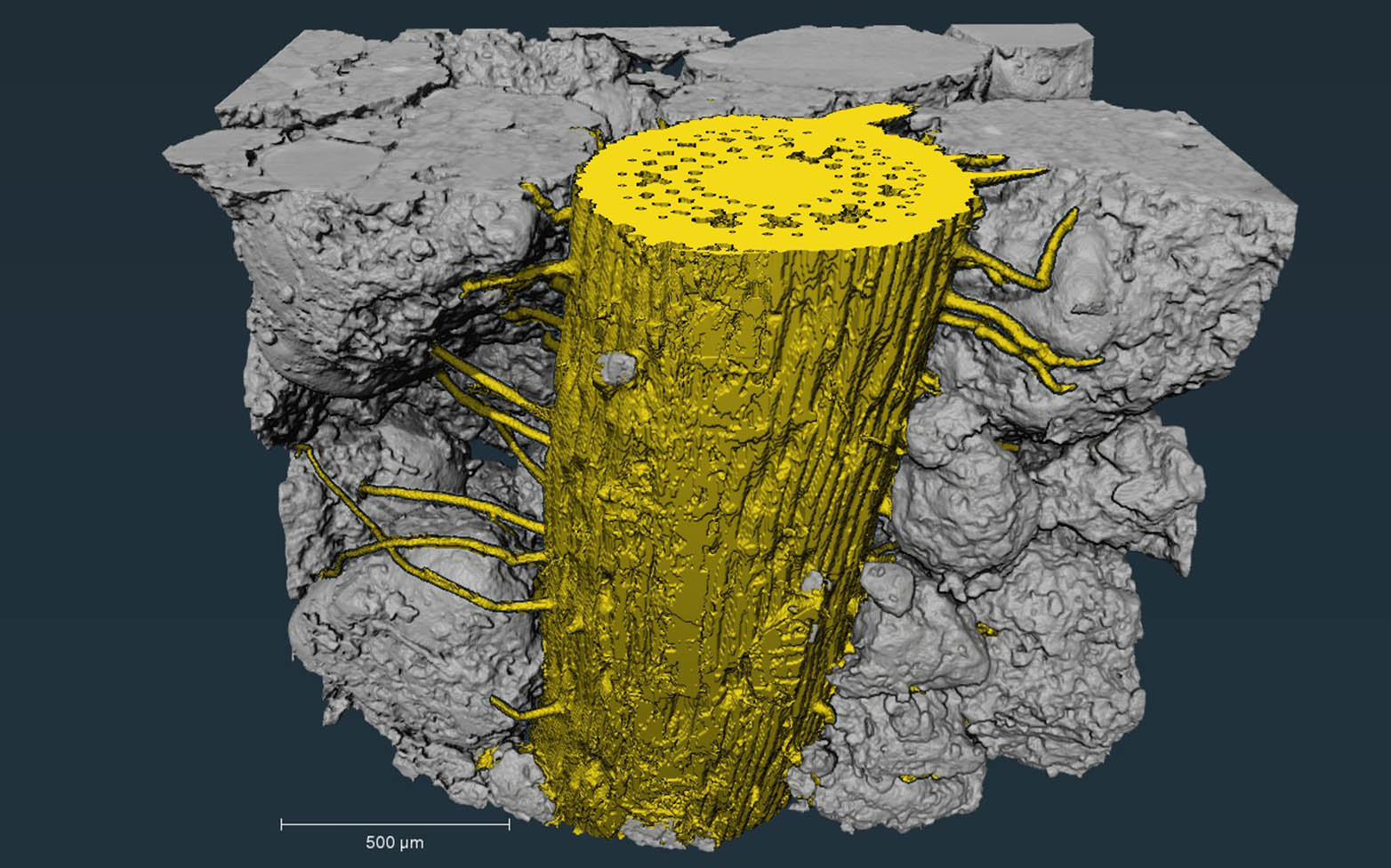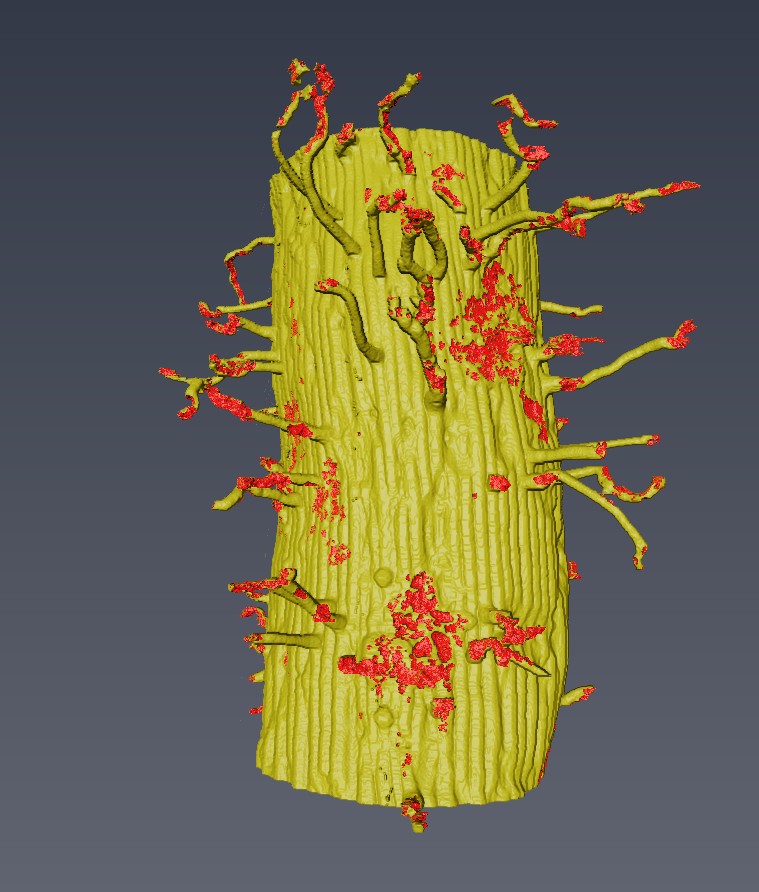Rhizosphere Spatiotemporal Organisation
P3 – Emerging effects of root hairs and mucilage on plant scale soil water relations
To take up water and nutrients under soil-limiting conditions, plants alter the properties of the thin layer of soil surrounding their roots - the so-called rhizosphere. Different strategies are used to enhance the contact between roots and soil, thus facilitating fluxes across the root-soil-interface.
Our research focuses on one of those plant strategies: the growth of root hairs. Increasing both the contact area between roots and soil and the effective root radius, root hairs are expected to enable plants to sustain high transpiration rates under soil-water-limiting conditions.

We aim to investigate the response of root hairs to soil drying as well as the role of root hairs in root water uptake. High-resolution synchrotron X-ray CTs of a Zea maize wildtype serve as a basis for image analysis including the quantification of root hair-specific measures (e.g. root-soil contact area, see Figure 2). Considering the root hair distribution and soil structure from our CT data, we will perform image-based simulations of root water uptake enabling us to calculate the effective hydraulic conductivity of the rhizosphere. This in turn will allow us to include the effect of rhizosphere properties in a plant scale model of water uptake.

Contact: Patrick Duddek ()